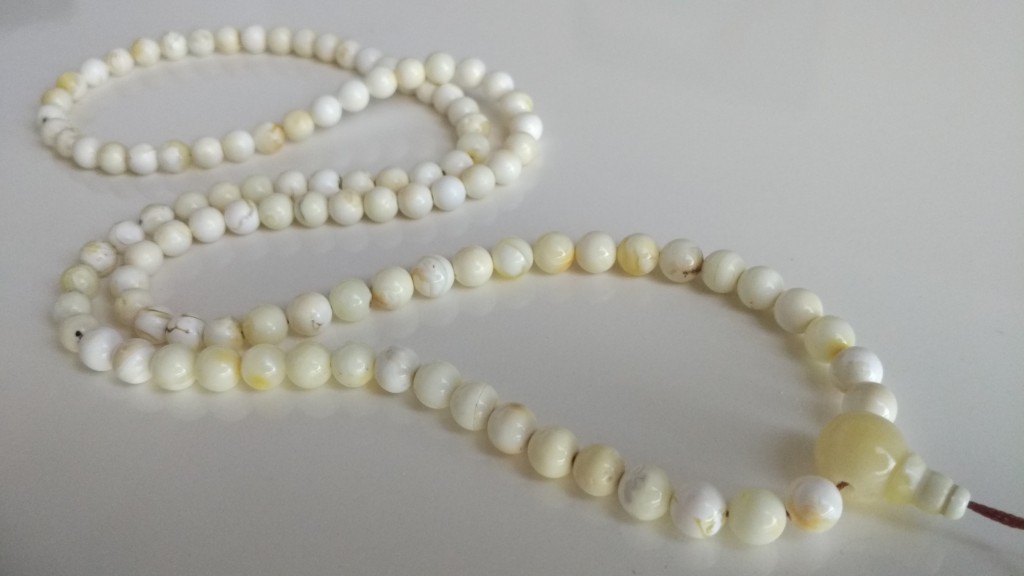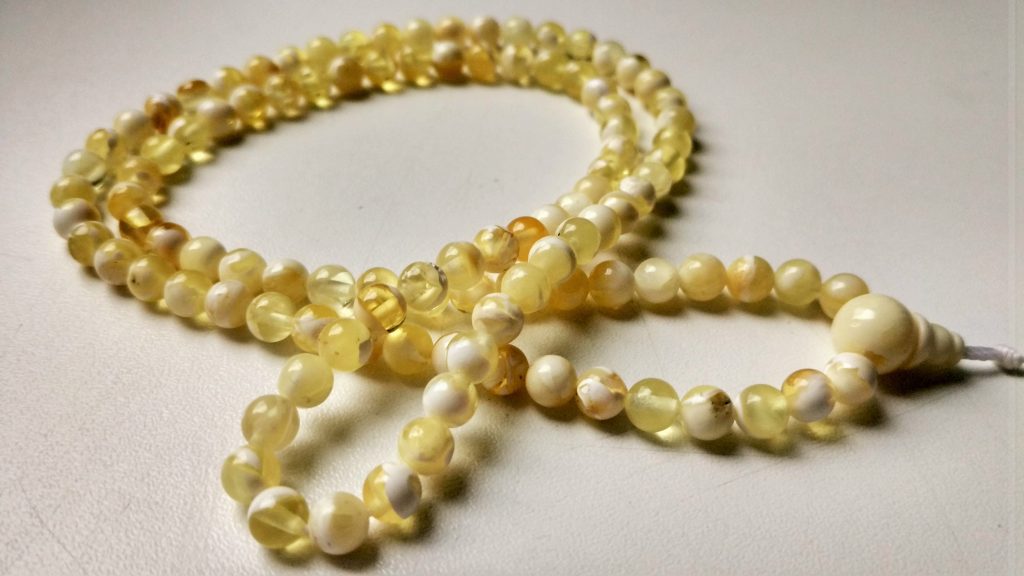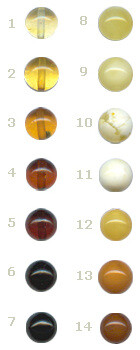Within Baltic amber, you will find myriad of colours and shading, clarity and density. There are 7 primary colours and over 250 variations within that colouration.

There are various tints within the rainbow spectrum that range from the palest yellow to rich yellow to blue, white, forest green, honey beige, smoky brown and many others within each of these colours. Because natural Baltic Amber is as varietal as nature itself, there are sometimes two or more colours or patterns within an individual piece of Baltic Amber.

In red shade, Baltic Amber is especially rare and was formed when the Amber stayed in the air for a long time. Oxidation process, heat of the sun, fire in the ancient forest. Natural oxidation takes place in the air and the Amber interacts with oxygen and changes its color step by step. Transparent Amber becomes red colour. This is a very long process: changes in the shades of colour could be noticed only after 50-70 years.

Yellow Amber is the most common colour. The resin was flowing from trees in the heat of the sun and the volatile components of resin evaporated and made them turbid – thousands of small gas bubbles were formed. These bubbles
Baltic amber has countless shades of colour – all malas are unique.

White Baltic Amber accounts for about two per cent of the world’s supply. Usually, this amber is distinguished by its variety of textures and “natural ornamentation”. The volatile materials of resins evaporated very intensively in the sun heat and resin obtained the form of foam. In one square millimetre of white amber, there could be about 1 million micro-bubbles 0.001-0.0008 mm. in diameter. In ancient times white Amber was used to produce expensive medicine. They were used to treat heart ailments.

Greenish amber is also rare and very popular and only accounts for about two per cent of the amber found. The greenish Amber colour was formed after resin fell on plants and reacted with pigment chlorophyll that could be found in plants. Because of the amber’s crystal structure, sometimes green Amber is called “sugar” Amber.

Black amber accounts for about fifteen per cent of the Amber found. The resin was thoroughly mixed up with the remains of the bark and leaf litter mass. Sometimes there could be only 10-15% of resin, and the other being impurities. Black colour Amber is fragile and softer.

Colour palette. Keeping the varietal theme of its incredible nature, Baltic Amber can be entirely opaque or as transparent as a clear window. Approximately 10% of Amber is transparent. Resin in the ancient forests flowed in a shady place; that is why turpens, the volatile components of resin evaporated slowly and did not make the resin turbid with gas bubbles, so the amber remained transparent. The shade of transparency could change from a yellowish colour to a dark red colour; it depends on the degree of Baltic Amber oxidation.
Of course, the amber palette is simplified for practical use. Colours from No.1 to No.7 are the most popular. Colours from No.8 to No. 14 are rare – every mala is custom-made and unique.



